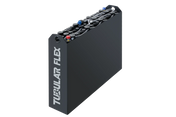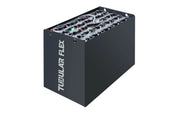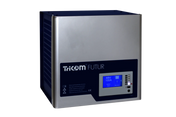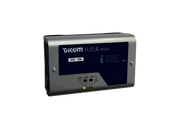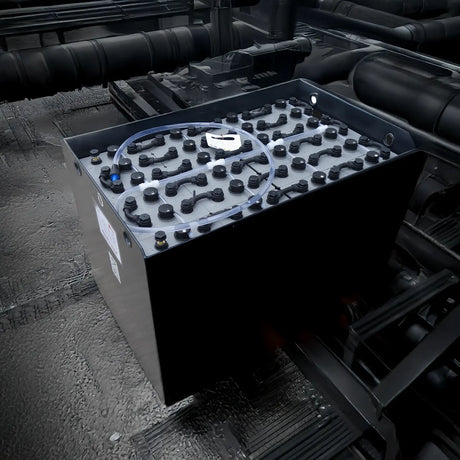Forklift batteries are the heart of every electric forklift. Their functionality is crucial , because without a powerful battery, operations come to a standstill. However, many underestimate the importance of consistent maintenance. If you treat your lead-acid battery properly, you can significantly extend its lifespan and reduce operating costs . This guide will explain which maintenance routines really matter, how to avoid common mistakes, and what to consider when charging, refilling, and checking .
Why the right care is crucial
Lead-acid batteries are among the most widely used battery systems in intralogistics. They achieve an average of around 1,200 charging cycles – provided they are properly maintained. Incorrect charging, deep discharge, or irregular maintenance can drastically reduce this number. If a forklift battery is not properly treated, the following frequently occurs:
- Sulfation – crystalline deposits on the plates reduce charging capacity. (More on this in the article "Desulfating the Battery ")
- Overheating – due to excessive charging currents or poor ventilation.
- Capacity loss – decreasing energy density and shortened service life.
With consistent maintenance, the service life can be extended by several years – while at the same time lowering operating costs and reducing downtime.
Charging correctly – the basis of any battery care
Incorrect charging cycles are among the most common causes of premature battery failure. Follow these best practices :
- Charge the forklift battery to 20–30% remaining charge . Deeper discharge leads to sulfation and reduces usable capacity.
- Avoid intermediate charging . Frequent short charges increase the number of charging cycles and shorten the battery's lifespan.
- Always charge fully – a half-charged battery will not deliver full power.
- Charge overnight – so you’ll have full power the next day.
- Select the appropriate charger . It should meet the requirements of DIN 43530-4 and match the battery voltage.
Important: Charging generates heat. An overheated battery can reach temperatures exceeding 50°C. Therefore, always charge in a well-ventilated area to avoid excessive heat buildup .
Check electrolyte and water levels regularly
For a battery to function efficiently, the correct electrolyte level is crucial. Use only distilled water and check the level regularly.
- Check water level – too little water leads to sulfation, too much dilutes the electrolyte.
- Only refill after the battery is fully charged – otherwise the liquid may overflow.
- Pay attention to the markings – the level should always be between the min and max lines.
- Do not use tap water – minerals and metals damage the cells.
The permissible TDS value of the refill water should be below 200 ppm . This is the only way to ensure the electrolyte remains chemically stable.
Prevent acid stratification
With irregular use, the acid in the battery can stratify—concentrated at the bottom and diluted at the top. This acid stratification leads to uneven cell loading and premature capacity loss. This can be avoided by:
- Regular equalizing charges – they mix the electrolyte evenly.
- Electrolyte circulation (EUW) – many modern chargers offer this function as standard.
Maintenance intervals and inspection plan
Regular inspection is key to a long service life. Recommended intervals:
- Weekly: Check water level, visually inspect for dirt.
- Quarterly: Clean terminal connections, measure electrolyte density.
- Every six months: Carry out an equalization charge, check the cable and housing for damage.
- Annually: Operational inspection by specialist personnel.
Float and trickle charge
For longer periods of inactivity, a float or maintenance charge is recommended. This keeps the battery fully charged without overcharging. The float voltage is 2.23–2.30 V/cell at 25°C and is temperature-compensated. This allows the battery to remain operational for weeks without sustaining damage.
Charging current and C-rate
The charging performance of a battery is defined by the C-rate . In the bulk phase, the current is typically between 0.1 and 0.25 C. Towards the end of the charging process, it drops to approximately 0.07 C. In the maintenance phase, only a very low current in the milliampere range ( trickle charge ) flows to compensate for self-discharge.
Temperature management
The recommended operating temperature for traction batteries is between 10°C and 25°C . Charging should not occur at temperatures above 55°C or below 0°C. Store batteries in a cool, dry place and according to the FIFO (First In – First Out) principle to prevent aging.
Mechanical testing and cleaning
Regular maintenance includes a mechanical check. Pay attention to:
- Clean poles and connectors – remove any signs of corrosion immediately.
- Casing condition – cracks or swelling may indicate cell damage.
- Correct torque of the connection screws – loose connections lead to contact resistance.
Check insulation resistance and tightness
Regular insulation resistance testing according to DIN VDE 0117 detects damp or defective cells early on. Equally important is leak testing of the vents – this prevents electrolyte from escaping and protects against short circuits caused by leakage currents.
Battery diagnostics and performance testing
The professional assessment includes:
- Cell voltage test – Cells below 2.12 V are considered weak.
- Internal resistance measurement – shows aging and corrosion.
- CCA test (Cold Cranking Amps) – measures the starting power under load.
These diagnoses should be carried out by qualified personnel as part of the annual maintenance in order to detect defects in a timely manner.
Storage and downtime
The battery must be fully charged before storage. For extended periods of storage, a float charge is recommended to prevent self-discharge. The state of charge should never fall below 80% SOC . Recharge should be performed if the battery is stored for more than a month.
Conclusion: Care pays off
A well-maintained forklift battery is more powerful, longer-lasting, and more economical . Regular charging, checking the water level, avoiding acid stratification, and adhering to maintenance intervals can extend its service life by years . Systematic battery care saves money, reduces breakdowns, and ensures smooth operation – all in line with the philosophy of HK Handels GmbH .


